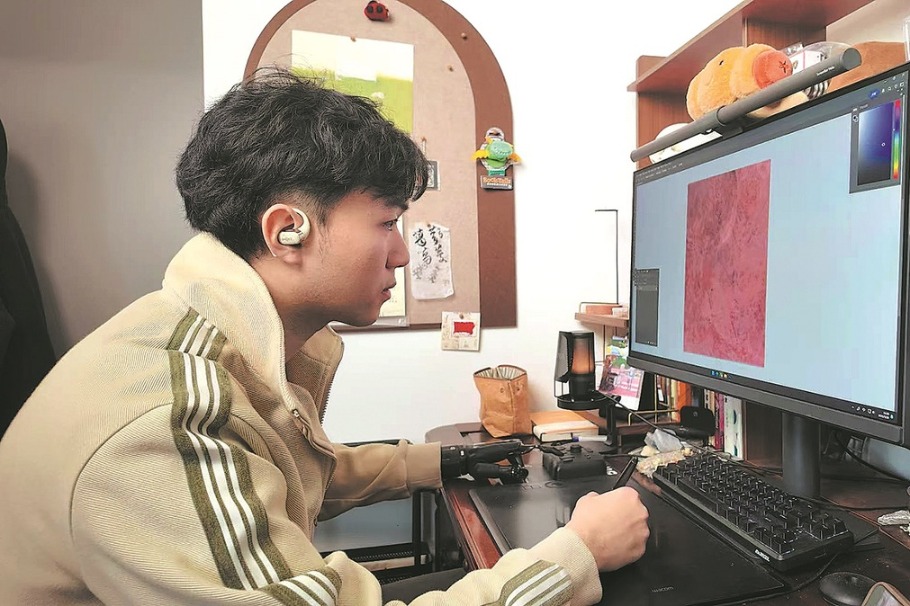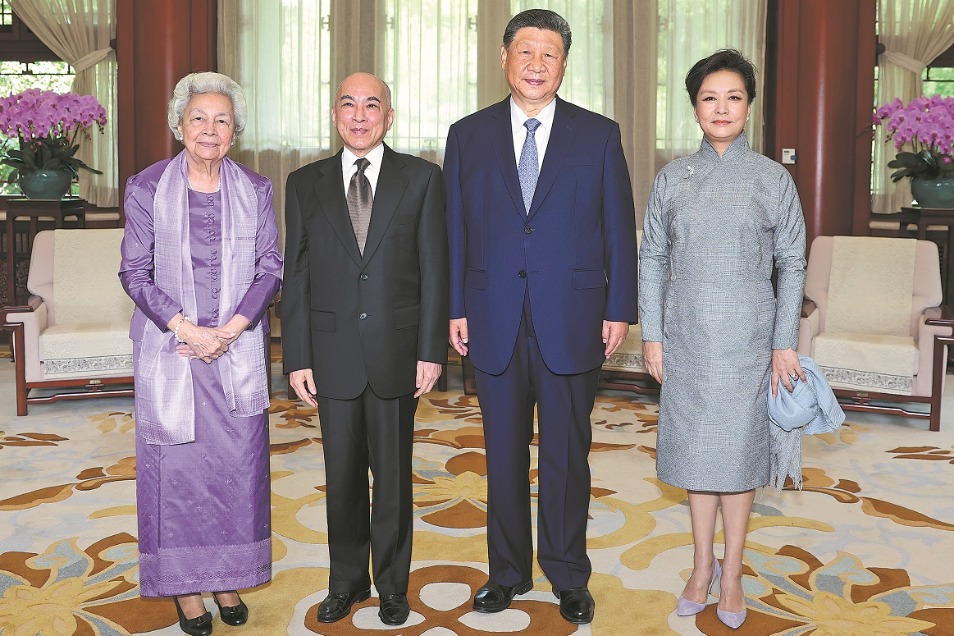Ancient instrument makes comeback in modern world
Musician Nie Yunlei reintroduces a 3,000 year-old reed-based organ into concert halls across China, Chen Nan reports from Beijing.

Whenever Nie Yunlei tours with his musical instrument, the sheng — a hand-held reed mouth organ with multiple vertical pipes — he wonders "How can this instrument survive in the modern age?"
The sheng dates back at least 3,000 years — images of it are captured in paintings from 1100 BC, and some from the Han Dynasty (206 BC-AD 220) still exist. However, it is little-known among audiences.
"I often give performances across China and I find that the sheng is overlooked and people don't know much about it," says Nie. "The sheng, one of the oldest species of Chinese instruments, is capable of playing chords and can be played by both exhaling and inhaling. It somewhat compensates for the absence of brass instruments in Chinese orchestration. I hope that people can appreciate the instrument and enjoy its versatility."
The veteran sheng player, 43, is keen on preserving and reviving the instrument, and has been experimenting with new sounds for it.
On Aug 31, he performed at the Beijing Concert Hall, playing 10 original pieces written for the sheng. Seven made their debut at the show.
Nie wove together multiple forms, including chamber music, orchestras and vocals, displaying the wide variety of colorful sounds that can be produced by the sheng. He performed two pieces during the encore: one a collaboration with his 9-year-old daughter, who plays cello, and the other including not only the sheng but also the suona, another wind instrument which originated in the Middle East and spread around the world in the medieval period, eventually reaching China, where it was adapted for use in ensembles, processions and operas.
"Audiences have a clear impression of the sheng because the musical instrument is old and commonly seen in animation and movies as well as at village ceremonies, funerals and weddings. There are clear stereotypes for the sheng: old, folk, and traditional styles of Chinese music," says Nie. "However, that's not the whole picture."
One of the pieces premiered by Nie during the concert was composed by Xing Xiao, 32, a specialist in Kunqu Opera, a Ming Dynasty (1368-1644)-antecedent of the more popular Peking Opera. The composition includes not only the sheng but also cymbals of different sizes, the bangu (a small animal-skin drum) and vocals — instruments that are also used in Peking Opera. Since the piece portrays the lifelong journey of a Peking Opera artist growing from a young performer to a star, it is titled Jue'er, a phrase referring to Peking Opera stars.
During the concert, Nie also played a piece titled Like You and Me, joined by accordion player Han Yirui. The piece was composed by Robert Zollitsch, a German ethnomusicologist who has spent his career studying Mongolian, Chinese and Tibetan classical music, fusing Asian and European influences. Zollitsch wrote the composition for the two instruments after learning that they were related — a sheng taken to Europe in the 1770s helped stimulate the invention of instruments using free reeds, such as the accordion.
"I am very excited that audiences enjoyed the concert, which lasted for 2 hours and 40 minutes. Some contacted me after the concert, asking questions about the sheng," says Nie, who plans to take his act to more Chinese cities next year.
The sheng was not the first musical instrument that Nie learned.
Nie, who was born in a small village near Shijiazhuang, Hebei province, was introduced to various traditional Chinese musical instruments as a child thanks to his family, which had a long-standing musical reputation in his hometown — the family would often be asked to play together at parties, ceremonies, funerals and weddings in nearby villages.
At 5 years old, Nie started to play the suona with his father. "It was natural for me to learn the suona, and many other instruments used in the family band. I never felt bored playing them and I enjoyed going to various performances with my family, which always captured people's interest," recalls Nie. "My family has a repertoire of musical pieces passed down from older generations and I learned them as a child. They heavily influenced me and even today, I can remember them."
At 10 years old, Nie was selected to join a folk band in Jingxing county, which performed for the local dance troupe that specialized in Jingxing Lahua, a unique folk dance from the county featuring performers in bright costumes holding various props with symbolic meanings, such as vases for peace and umbrellas for a good harvest.
"I could play all the musical instruments used in the band except the sheng so I decided to learn it," says Nie.
In 1994, he enrolled to study the sheng at Hebei Vocational Art College, graduating in 2000. From 2001 to 2005, he furthered his sheng study at the National Academy of Chinese Theatre Arts in Beijing. As a student, he worked with Robert Zollitsch and his wife, the singer Gong Linna. While working with the couple, Nie was introduced to chamber music, which features a small number of performers originally meant to fit into intimate palace settings.
Nie's longtime collaboration with Gong and Zollitsch also inspired him to release an album in 2021 titled Like You and Me, which featured seven pieces presenting the sheng via chamber music.
"I met Nie for the first time when he held a concert at the National Academy of Chinese Theatre Arts in 2001. I was impressed by his music and the creative ideas he had about his instrument. We've been working together for over 20 years and he still inspires me," says Gong.
After graduation, Nie joined the Jingju Theatre Company in Beijing, one of the largest professional Peking Opera ensembles in China. Peking Opera, known as jingju in Chinese, is a 200-year-old art form combining diverse performative aspects like instrumentals, singing, dancing and martial arts.
"I've been watching lots of performances of traditional Chinese opera since both the Hebei Vocational Art College and the National Academy of Chinese Theatre Arts have lots of students learning it," says Nie. "Both traditional Chinese opera and traditional Chinese music focus on creating a sense of unique charm, relying on rhythmic sounds and movements. When you listen to Chinese music or opera, you feel like you are drifting in a river at different speeds and in different directions."
In 2005, Nie started working with veteran Peking Opera actress Chi Xiaoqiu, who is known for carrying on the Cheng School founded by Peking Opera master Cheng Yanqiu (1904-58), which focuses on representing the inner turmoil of characters and often tells tragic stories.
Nie has also tried to improve the instrument by making a number of alterations to the sheng, ranging from its tone, volume and note arrangements to its appearance and weight.
"These alterations may encourage contemporary composers to create new pieces and expand the sheng repertoire," says Nie.



Today's Top News
- China announces press briefings on victory anniversary events
- Japan's ploy to block parade an insult to history
- Initiative on AI hailed as growth catalyst
- China protests Japan's 'boycott' move
- Xi meets Cambodian king, queen mother
- Xi: Relations with Russia unparalleled






























